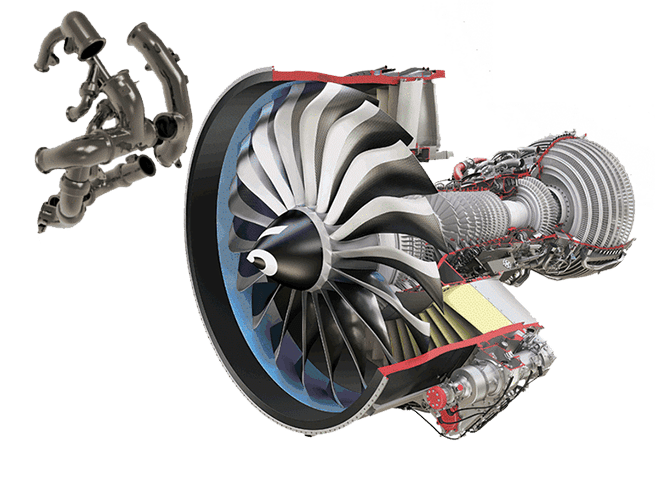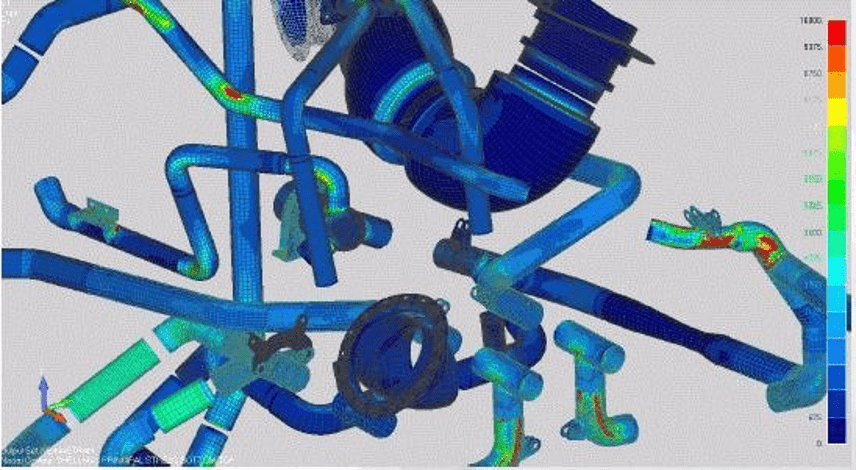Senior Aerospace SSP has developed proprietary computer programs and models to analyze variables such as pressure drop, heat transfer, angulation, stiffness and other features present in aircraft and space launch systems.
The campus includes Catia v5 workstations, Catia v4.2.2 workstations, Solidworks licenses, and MasterCam licenses. All are used individually or collectively for design, analysis, drafting, and manufacturing activities.
Finite element methods and modeling techniques (FEA) are used to model, verify stress analysis, and identify critical stress locations of complex shaped details and assemblies under worst case load conditions on an as needed basis. FEA tools, such as NASTRAN/FEMAP, are used to identify critical and non-critical stress location(s) thereby providing means for optimized designs and potential weight and cost reductions.

Design Approach
Full system design parameters including material selection, sizing (both diameter and wall thickness), mating components, flexible elements, mounting components, insulation, and patented bleed leak detection elements are all configured based on maximum operating temperatures, flow conditions, proof and burst pressures, installation efficiencies, thermal growth, structural deflections, and environmental/touch temperature conditions and other requirements.
Analysis
Three-dimensional FEA models are constructed to produce interface reaction loads, determine flexible joint locations, and provide stress analyses on ducts and brackets to optimize material selection and thickness. In addition, vibration loads can be simulated in models to find areas of stress concentration.


